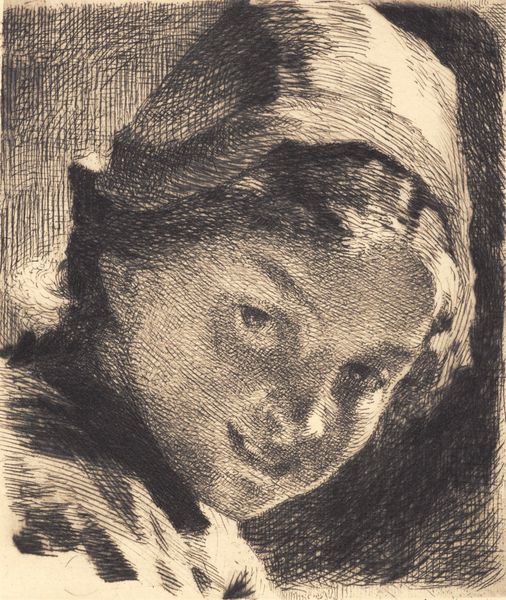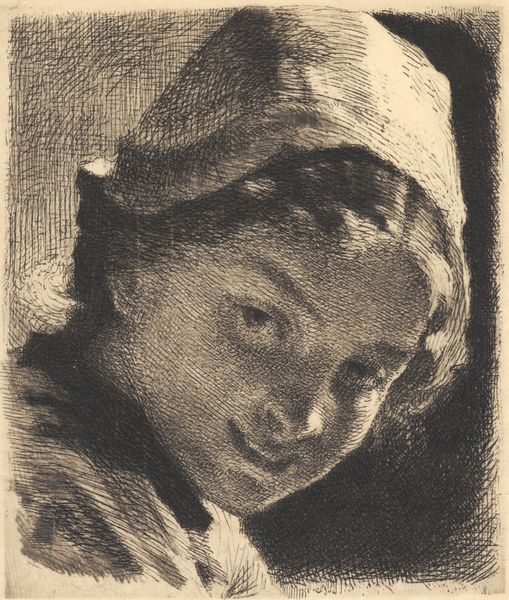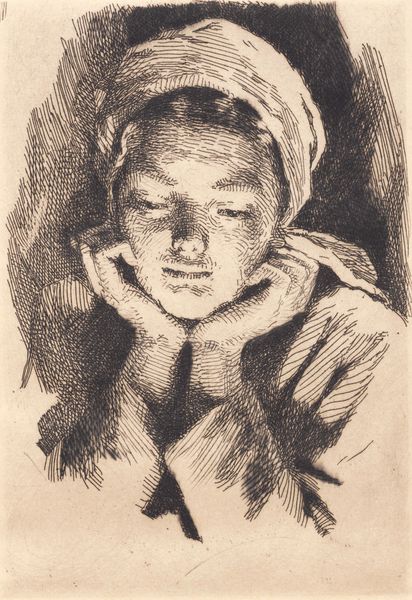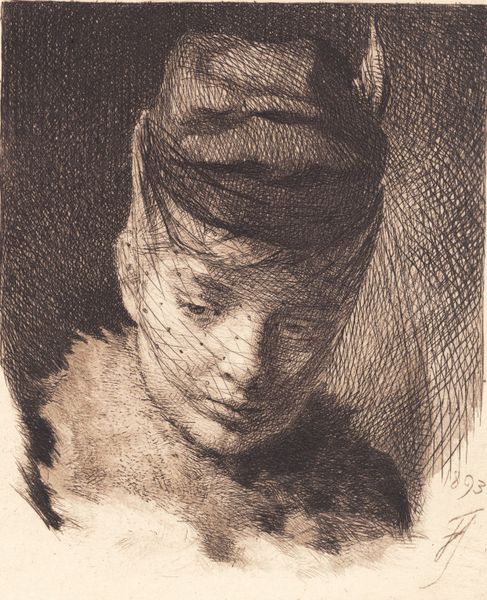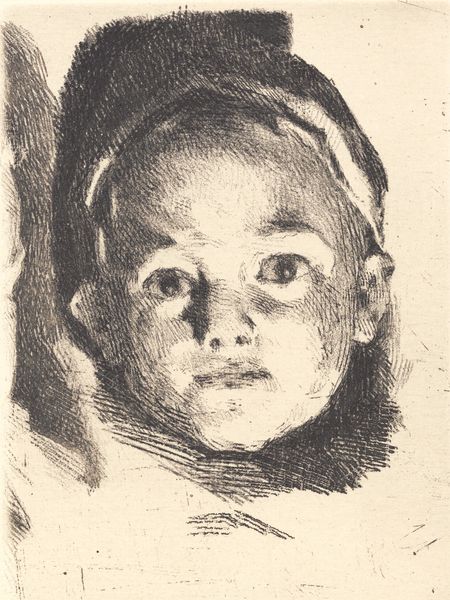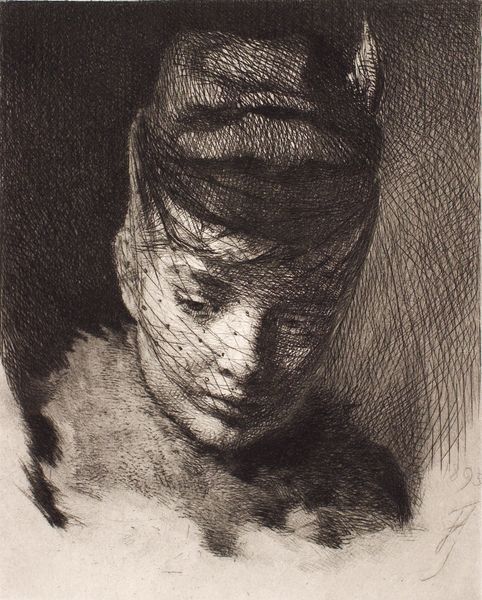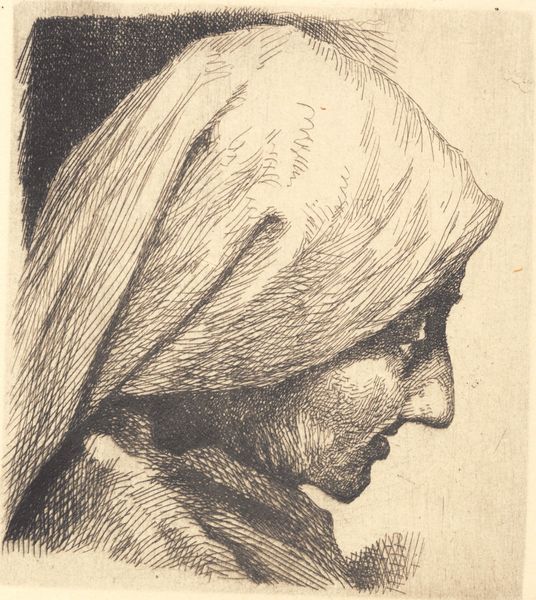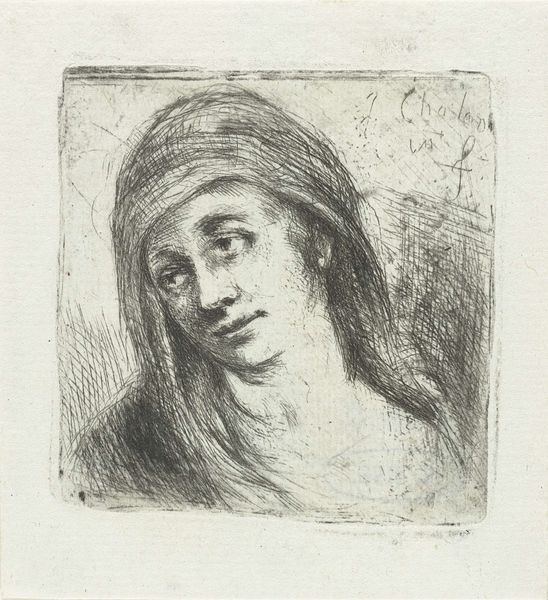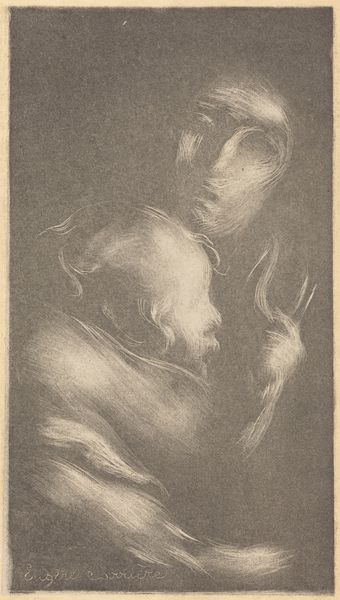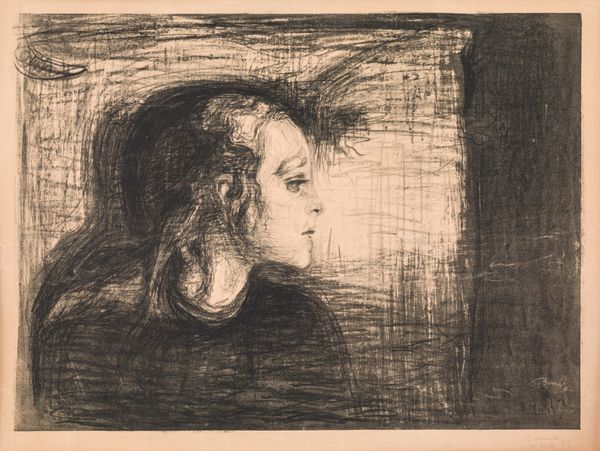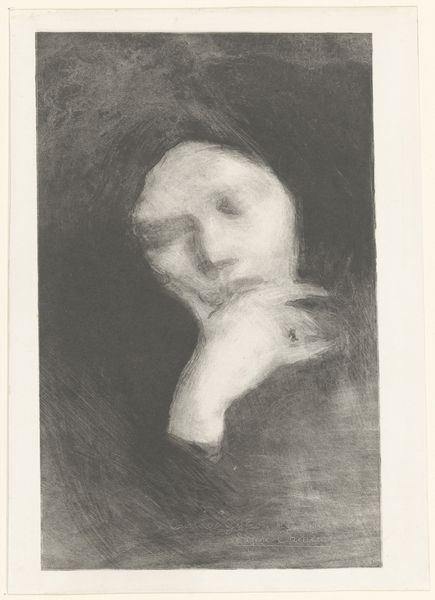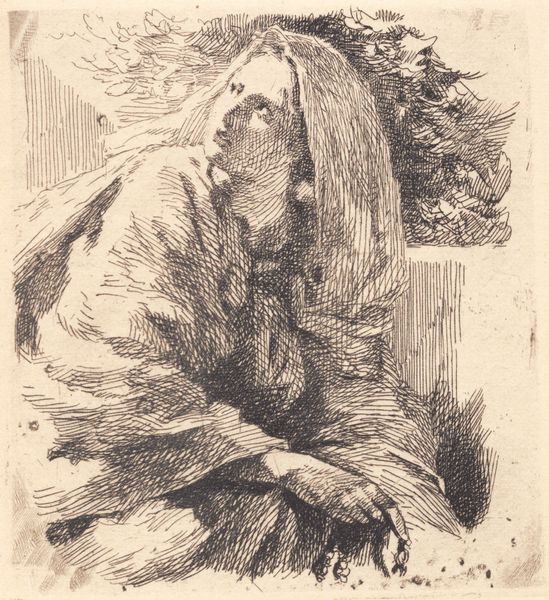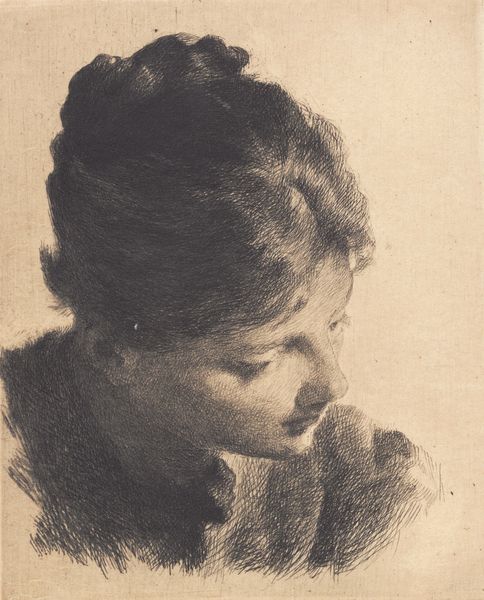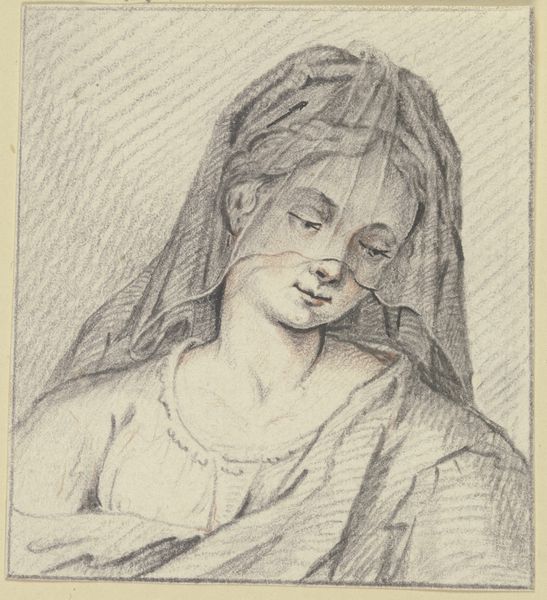
Dimensions: 100 mm (height) x 88 mm (width) (plademaal)
Editor: We are looking at Frans Schwartz’s "Leende pige med hue," or "Smiling Girl with a Bonnet," an etching from 1901. It’s a small portrait, and the detail is striking for a print. What’s your interpretation of this work? Curator: As a materialist, I'm drawn to the etching process itself. Think about the labour involved: the artist meticulously scratching into a metal plate, using acid to deepen those lines, and then the press, each impression a trace of that physical engagement. It’s also important to consider what a print like this enabled; to circulate images more widely than paintings allowed. Who would have purchased this, and how did this affect the accessibility and the appreciation of art for the masses at the time? Editor: So, you see it as connected to democratizing art consumption? Curator: Absolutely. Furthermore, consider the materials used. Copper, ink, paper – seemingly simple, but each has its own history of extraction, production, and trade. How did those realities shape Schwartz’s artistic vision? And did this etching provide him enough material to live comfortably? Editor: That’s a perspective I hadn’t considered – the materiality having socio-economic implications on not just the artwork, but the artist, too! The detail also has some impressionistic qualities... how was printmaking perceived compared to painting at the time? Was it 'lesser' art? Curator: That's a great point. There was definitely a hierarchy, with painting often seen as superior. Prints were often considered a more 'commercial' medium, linked to reproduction and dissemination, potentially undermining its standing. By studying the process and reception, we can unpick the conventional art historical narrative. Editor: I guess I was only focused on the smiling girl. But it’s amazing how looking at production changes the reading. Curator: Precisely. We've gone beyond the simple image, delving into the world of labour, materials, and the social structures surrounding the piece. Now that’s the beauty of art history!
Comments
No comments
Be the first to comment and join the conversation on the ultimate creative platform.
